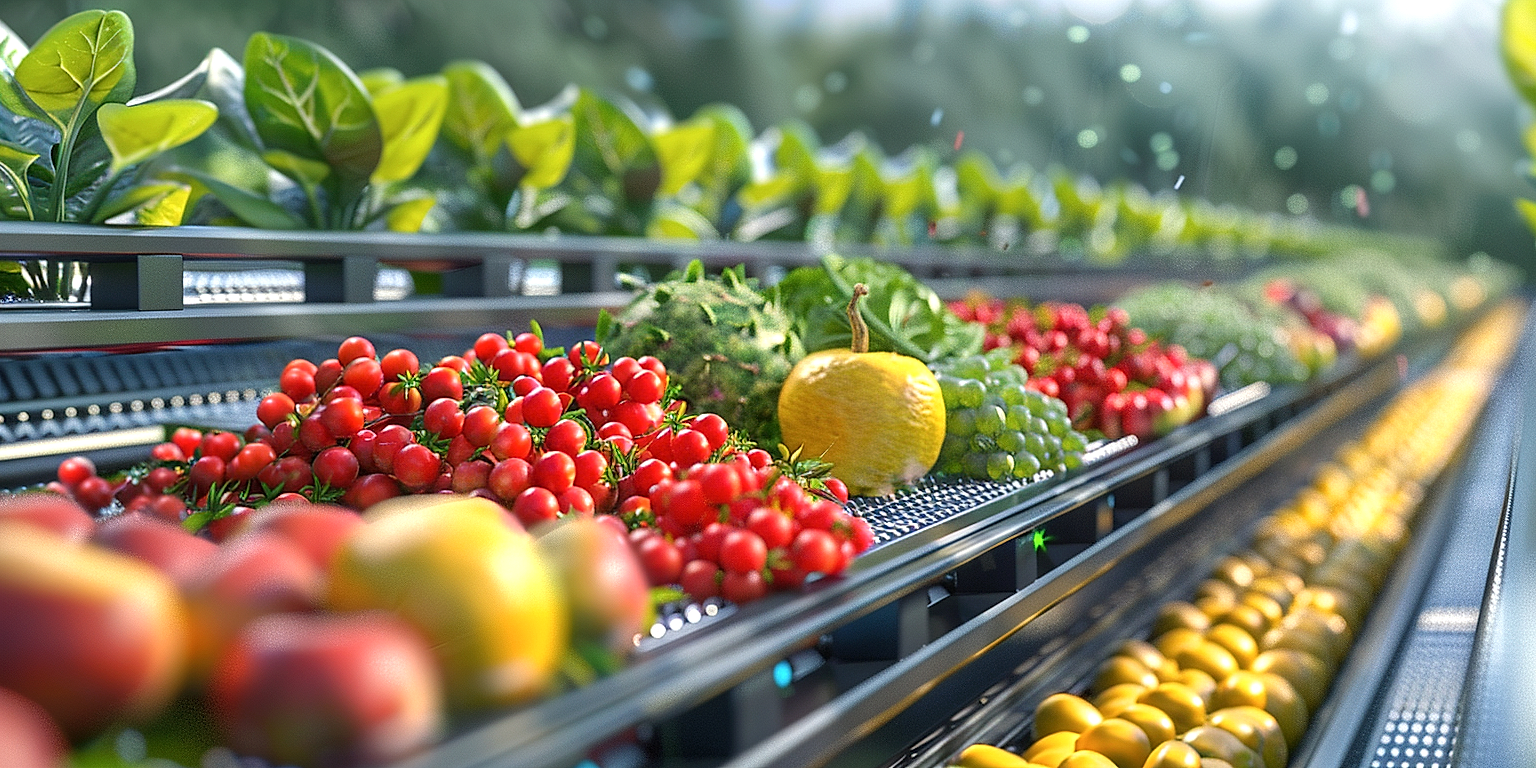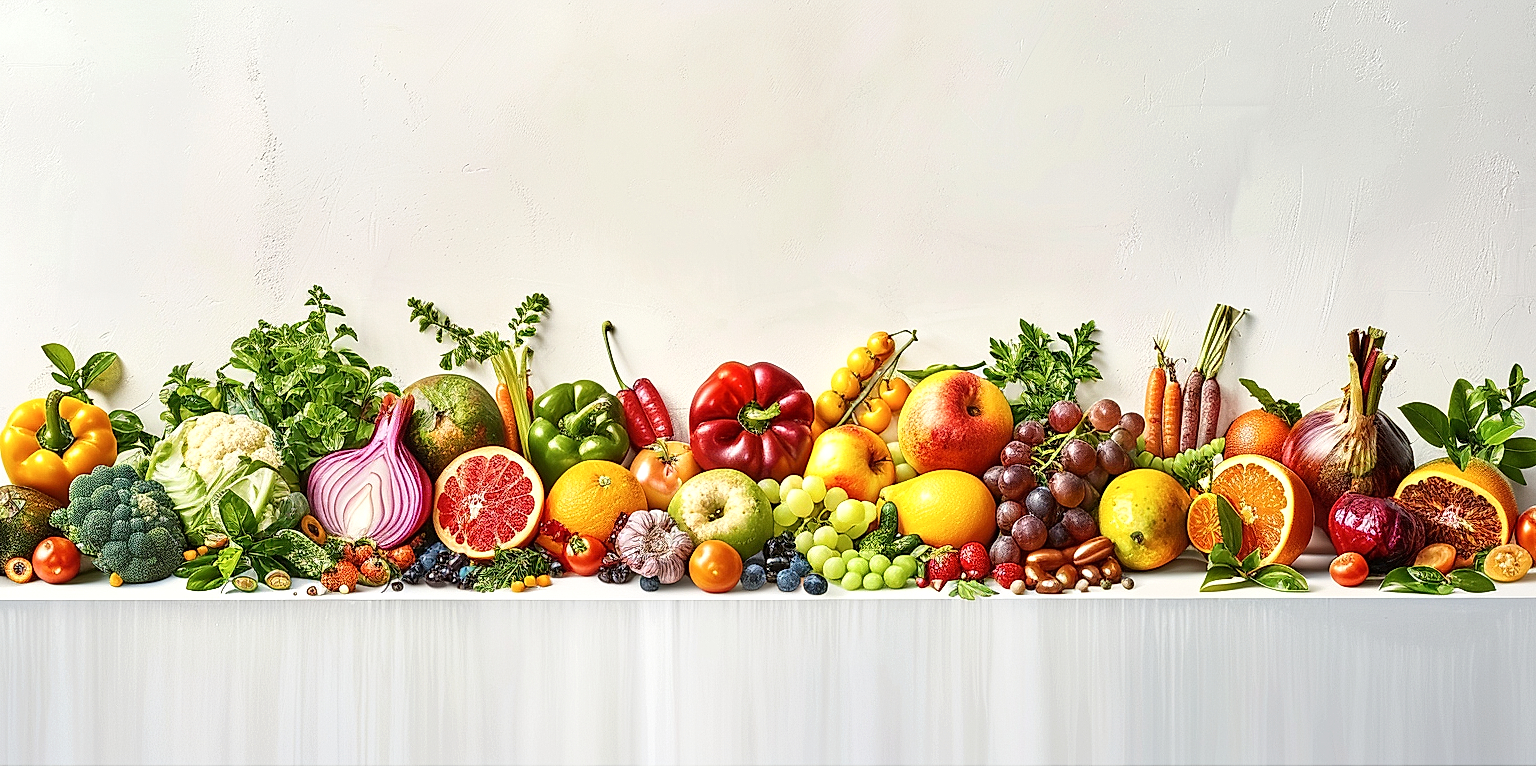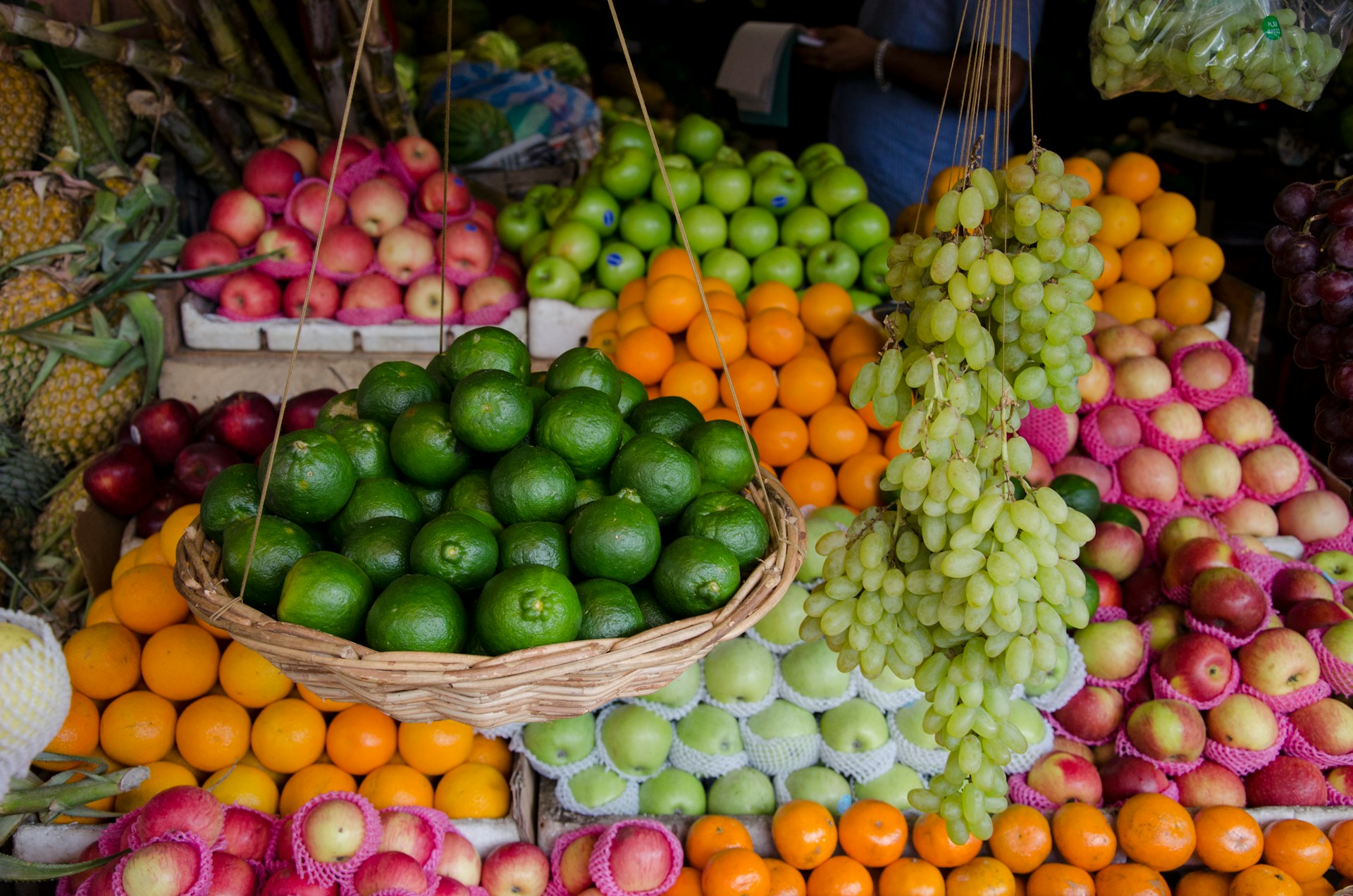As the agriculture industry continues to evolve, so does the efficiency of produce processing operations.
This evolution is not only benefiting businesses but also transforming the landscape of food production globally.
Such operations are the backbone of the agri-food sector, with their success largely dependent on strategic planning and implementation.
This post aims to present a comprehensive analysis of the emerging strategies and technologies propelling this growth.
Attention to these trends can provide key insights into the creation and maintenance of competitive, sustainable, and profitable operations.
Let us delve deeper into understanding the current efficiency trends dominating this sector.
Contents
- Efficiency Trends In Produce Processing Operations
- 1. Automation in sorting and packaging
- 2. Advanced Irrigation Systems for Crop Growth
- 3. Adopting precision agriculture technologies
- 4. Use of AI in managing produce processing
- 5. Implementation of sustainable farming techniques.
- 6. Rapid testing methods for food safety.
- 7. Blockchain for traceability in the supply chain.
- 8. Waste Minimizing Strategies in Processing
- 9. Energy-efficient cold storage solutions
- 10. Utilizing IoT for real-time operation monitoring.
- The Bottom Line
Efficiency Trends In Produce Processing Operations
1. Automation in sorting and packaging
Within the realm of produce processing operations, automation in sorting and packaging plays an imperative role.
The automation of these tasks not only increases efficiency but also reduces the possibilities for human error.
Sorting and packaging are often time-consuming tasks that require substantial human effort.
The incorporation of automation in these stages of processing can significantly enhance the efficiency and speed, enabling operations to process larger volumes of produce.
With advancements in machine learning and robotics, automation technologies are becoming increasingly sophisticated, capable of performing complex sorting and packaging tasks with precision.
Robotic arms, for example, equipped with high-resolution cameras and sensors, can sort fruits and vegetables based on color, size, and shape.
Furthermore, they can identify and remove damaged or diseased produce, ensuring that only the highest quality products make it to the packaging stage.
Packaging automation, on the other hand, can seamlessly place and secure the sorted produce in boxes or packets, ready for shipment.
Automating packaging processes significantly reduces the chances of damaging the produce due to human handling.
It also ensures a consistent packaging quality that aligns with the brand’s standards.
Another key advantage of automation in sorting and packaging is the potential for cost savings.
While the initial investment in automation technologies may be substantial, the savings over time from enhanced efficiency, lower waste, and reduced labor costs can lead to significant ROI.
Moreover, automation can provide consistency in operations, regardless of the volume or variety of produce being handled.
This kind of flexibility is particularly useful for produce processing operations that deal with seasonal fruits and vegetables, where the volume and types of produce can vary greatly throughout the year.
Automation is also a solution to labor shortages in the agriculture sector, which is a common problem worldwide.
In conclusion, the adoption of automation in sorting and packaging processes in the produce industry is one of the critical efficiency trends leading to higher productivity, lower costs, and improved product quality.
2. Advanced Irrigation Systems for Crop Growth
The concept of advanced irrigation systems is a crucial element playing a pivotal role in modern agricultural practices, specifically in produce processing operations.
In the world of efficiency and sustainability, the escalation of productivity with minimal water usage is essential.
Advanced irrigation systems assist farmers in achieving improved yields with less water, leading to more cost-effective and environmentally-friendly requires operations.
Precision irrigation, for instance, ensures that crops receive the exact amount of water they need at precise times, circumventing water waste and maximizing growth efficiency.
Advanced irrigation systems prove to be instrumental in striking a balance between water conservation, improving productivity and efficiency in crop growth while retaining the nutritional value in produce processing operations.
Utilizing rainfall and moisture sensors, smart timers, and drip irrigation systems, farmers can optimize water usage, thus increasing production efficiency and reducing environmental impact.
These systems commonly leverage the potential of Internet of Things (IoT) technology to cater to all sizes and types of agricultural operations.
In addition to maximizing water efficiency, these advanced irrigation systems also contribute to enhancing the health of crops by preventing waterlogging or drought conditions that could potentially harm or impede growth.
Furthermore, the integration of AI and Machine Learning in these systems allows for real-time monitoring and predictive analysis of irrigation needs based on various factors including crop type, weather patterns, soil health, and much more.
This predictive planning and adaptive irrigation method encourage a more responsive agricultural strategy, enhancing the overall efficiency in produce processing operations.
The availability of these data-driven insights on a real-time basis enables farmers to make informed decisions that can potentially lead to higher yields, cost savings, and reduced environmental impact.
This strategic use of technology in irrigation practices can revolutionize the industry, leading to sustainable and efficient produce processing methods.
Therefore, the adoption of advanced irrigation systems not only ensures the optimal utilization of water, but also amplifies productivity and efficiency in produce processing operations, ultimately benefiting farmers, consumers, and the environment.
Advanced irrigation systems, therefore, stand as an indispensable tool for farmers who strive to balance between water conservation, improving productivity, efficiency in crop growth and maintaining the nutritional value in produce processing operations.
In the grand scheme of things, these systems provide a robust solution to one of the most daunting problems faced by farmers today – water conservation, which often directly impacts efficiency in produce processing operations.
3. Adopting precision agriculture technologies
Technological advancements have significantly transformed the face of agriculture, with precision agriculture technologies standing out as one of the key contributors.
These technologies play an instrumental role in increasing the efficiency of produce processing operations.
They allow farmers to monitor crop growth on a high level of precision, and implement decisions based on accurate data.
For instance, they can accurately determine the exact amount of inputs needed such as fertilizers, water, and pesticides thus preventing wastage and ensuring optimal growth.
The data collected through precision agriculture technologies is also valuable in predicting yield, which aids in planning the subsequent processing activities.
They facilitate timely interventions, reducing the risks associated with delays in harvesting and processing, which can lead to loss of product quality.
The use of drones, GPS technology, and remote sensing devices provide a comprehensive view of the farm, identifying any anomalies in crop growth in real-time.
This precision approach allows for localized disease management, ensuring that infections do not spread to healthy crops.
Moreover, precision agriculture technologies contribute immensely to sustainability in produce processing operations.
By optimizing the use of inputs, they reduce the environmental impact associated with intense agricultural practices, specifically diminishing carbon emissions and water pollution.
Precision agriculture techniques also help in soil conservation, as they monitor soil health extensively, suggesting the appropriate crop rotations, and ensuring the soil isn’t exhausted.
Therefore, these technologies are not just valuable in the processing stage, but also in ensuring that the produce being processed is of the highest quality.
Further, it’s important to note that while the initial investment in precision agriculture technologies may seem prohibitive, the long-term benefits justify the costs.
Increased yields, reduced wastage, and sustainability lead to enhanced profitability, body the financial viability of these technologies.
Adopting precision agricultural technologies indicates a paradigm shift towards data-driven agriculture, a move that is poised to revolutionize produce processing operations and the agricultural sector at large.
Incorporating these technologies into agricultural practices demonstrates a commitment towards increased efficiency and sustainability in produce processing operations now and in the future.
4. Use of AI in managing produce processing
As the agriculture industry continues to evolve, the use of Artificial Intelligence (AI) in managing produce processing has become a significant efficiency trend.
One way AI is revolutionizing produce processing is through the identification and sorting of fruits and vegetables based on size, ripeness, and defects.
Using high-resolution cameras and advanced machine learning algorithms, AI-powered machines can inspect and categorize produce at a much faster rate than humans and with a high level of accuracy.
In addition to sorting, AI can also contribute to the efficiency of the packing process.
AI machines can handle delicate fruits and vegetables without causing damage, ensuring the quality of the end product.
This processing enhancement reduces waste and saves time, leading to increased productivity.
Apart from sorting and packing, AI technologies can enable better disease and pest detection.
Machine learning models, trained on thousands of images of healthy and diseased plants, can predict the presence of disease or pests in real-time, enabling early intervention and prevention.
By leveraging AI technology, producers can dramatically reduce crop losses and ensure high-quality produce.
Another massive application of AI in produce processing is yield prediction.
AI models can analyze various factors like weather data, soil conditions, and historical yield data to predict the output of a crop in a given season.
This predictive analysis enables efficient planning and resource allocation, reducing inefficiencies in the supply chain.
Moreover, AI is useful in planning the harvest, determining the optimum time to pick< the fruits or vegetables to ensure the maximum quality and longevity.
AI can also be integrated with other technologies, such as drones and robots, for automated harvesting, further increasing operational efficiency.
Finally, AI makes the data collection process more seamless and automated, providing valuable insights for making better-informed decisions.
The Internet of Things (IoT) devices, machine learning algorithms, and data-crunching capabilities of AI all together can help drive transformational changes in produce processing operations to achieve greater efficiency.
5. Implementation of sustainable farming techniques.
The agricultural sector continues to face growing challenges related to climate change and the increasing demand for food.
As a result, producing enough food while minimizing environmental degradation has become a major concern and a priority.
The implementation of sustainable farming techniques in produce processing operations can be a way to address these concerns while also increasing efficiency.
These techniques incorporate a variety of practices that aim to reduce environmental impact and conserve resources, such as energy and water.
It’s essential to mention that sustainable farming techniques go beyond merely preserving the environment; they also seek to improve the quality of the produce and the well-being of farmers.
One of these sustainable farming techniques is crop rotation, which can help reduce soil erosion, increase soil fertility, and manage pests and diseases in a natural way.
Another technique is the use of cover crops, which can improve soil health, reduce soil erosion, and enhance water retention.
Moreover, organic farming, which avoids the use of synthetic pesticides, and fertilizers, is another sustainable farming technique.
It not only preserves soil health but also provides nutrient-rich produce that is less likely to harm consumers’ health.
In an effort to minimize water use and waste, sustainable farming techniques also embrace the use of advanced irrigation systems, such as drip or sprinkler irrigation.
These systems can target the root zone of plants, reducing water waste and increasing water use efficiency.
Furthermore, the integration of sustainable energy sources in farming operations, such as solar or wind power, can also contribute to efficiency and sustainability.
They can reduce dependence on fossil fuels, lower greenhouse gas emissions, and save costs in the long run.
The use of precision farming technologies is another notable sustainable farming technique.
These technologies involve the use of advanced tools and data analysis to manage farming operations more accurately, efficiently, and sustainably.
For instance, the use of GPS, satellite imagery, or sensor technology can enable farmers to monitor their crops in real-time and make informed decisions that enhance efficiency and sustainability.
It’s evident that the implementation of sustainable farming techniques in produce processing operations can play a significant role in increasing efficiency while also ensuring sustainability.
6. Rapid testing methods for food safety.
In the modern agricultural sector, the need for rapid testing methods for food safety has never been more critical.
This importance stems primarily from the increasing global demand for fresh produce, which necessitates faster production times that could potentially compromise the safety of the produced foods.
Food safety in produce processing operations covers an array of areas, such as ensuring absence of harmful biological or chemical substances in the food to guarantee it is fit for human consumption.
With rising concerns over food-related health issues, the demand for implementing rapid testing methods in food safety has skyrocketed.
These rapid testing methods are designed to quickly detect potential hazards in the food products before they reach the consumers.
There are various rapid testing methods that are being used and developed in the industry, including biosensors, PCR technology, and spectroscopic techniques.
These technologies are reshaping the landscape of food safety checks, making it increasingly efficient, accurate, and reliable.
The use of biosensors, for example, allows for the instant detection of microorganisms or toxins in the food produce, making the safety assurance process much more immediate and effective.
Similarly, PCR technology offers a powerful tool for the detection of DNA or RNA of harmful organisms in the food samples, thus further increasing the efficiency and accuracy of the safety tests.
Finally, spectroscopic methods offer a non-invasive and rapid approach to testing, which makes them ideal for use in the fast-paced environment of produce processing operations.
Besides being able to significantly reduce the testing time, these advanced techniques also contribute to the overall efficiency of the produce processing operations by reducing the chance of a food recall event.
A food recall, due to safety reasons, can have catastrophic effects on the producer in terms of costs incurred, wasted resources, and damage to the brand reputation.
Thus, implementing rapid testing methods for food safety is not only a matter of protecting public health, but also an important strategy for maintaining the viability and sustainability of the produce processing operations.
Looking forward, as more advanced testing methods are being researched and developed, we can expect even faster and more accurate safety tests in the future.
This will undoubtedly boost the efficiency of produce processing operations, making our food supply safer and more reliable than ever before.
Therefore, investing in rapid testing methods for food safety is an important trend in improving efficiency in produce processing operations.
7. Blockchain for traceability in the supply chain.
The blockchain technology has been touted as a game-changer in various industries, including food processing and supply chains.
Its salient features, such as decentralization, immutability and transparency, provide an opportunity to enhance traceability in the produce processing operations.
With blockchain, all the transactions associated with a batch of produce from the point of origin to the supermarket shelf can be optimally documented and stored.
The stored information is accessible for all the nodes (participants) in the blockchain, ensuring transparency and trustworthiness.
The application of blockchain technology allows stakeholders to successfully trace the origin and path of food products, reinforcing consumer trust and brand integrity.
This can be particularly beneficial in times of food recall situations, where identifying the source of contamination can be expedited using blockchain.
Additionally, with immutable blockchain records, there is a reduction in the opportunity for fraud or tampering with the information related to the produce.
Apart from improving traceability, blockchain also facilitates swift and secure transactions between participants by eliminating the intermediaries.
This could potentially improve the efficiency of the supply chain and reduce costs.
For instance, Walmart and IBM worked on a pilot project to use blockchain for tracking mangos from farms to stores and reported reduced tracking time.
This is particularly crucial in the case of perishable goods where the efficiency and speed of the supply chain significantly impact the quality of the product.
Moreover, the transparency provided by blockchain can encourage producers and processors to adhere to sustainable practices as their actions are open to scrutiny.
In spite of the promising features, there are challenges to the widespread adoption of blockchain in the produce processing industry.
These include technological challenges like interoperability issues, high energy consumption and legal challenges around data privacy and regulatory acceptance.
However, with continued research and uptake by market leaders, it is believed that blockchain can become one of the crucial efficiency trends in produce processing operations.
It is deemed that companies that are quick to adopt and integrate blockchain technology into their operations will have a competitive edge in the market.
8. Waste Minimizing Strategies in Processing
The implementation of waste minimizing strategies in the processing of produce is a significant trend towards efficiency in the agriculture sector.
Efforts to reduce waste stem from various motivations, including economic gains, regulatory compliance, environmental conservation, and corporate social responsibility.
A key focus is developing methods that allow for the maximum utilization of raw materials.
As a result, innovative technologies and techniques are constantly evolving to optimize the processing procedures in ways that minimize the amount of waste produced.
These range from the use of sophisticated machinery that extracts every meaningful particle from the produce, to careful handling processes that zero in on reducing damage and spillage.
Similarly, there is a trend towards repurposing by-products of processing that would typically go to waste, translated into valuable commodities if processed further.
For example, fruit peels, rich in antioxidants and fibres, can be processed into animal feed, fertilizers or even cosmetic ingredients.
This process not only slashes disposal costs but also generates additional revenue streams, leading to economic efficiency.
Process engineering is also vital in waste reduction, with operations being designed or redesigned to boost performance and limit waste output.
Furthermore, there is a move towards predictive analytics and realtime monitoring of processes.
Digital systems now in place track data such as fluctuations in quality, size and ripeness of produce, or changes in operating conditions, to adapt processes swiftly and minimize wastage.
Another approach in waste reduction is the movement towards closed-loop systems for resource use.
Sustainability principles are anchored in ensuring that the resources used in production, including water and energy, are reused or recycled as much feasible, minimizing the waste produced and the resources required in the long run.
Additionally, waste auditing and tracing is growing in use as a tool to identify where waste is being produced in processing operations.
These audits help pinpoint inefficiencies, whereupon solutions can be formulated to manage the waste.
Collectively, these measures point to significant strides in waste management in the fruit processing sector, responding to growing calls for sustainable practices in the entire agricultural production process.
9. Energy-efficient cold storage solutions
One of the key efficiency trends in produce processing operations is the adoption of energy-efficient cold storage solutions.
This action plays a crucial role in maintaining the quality and safety of fresh produce after it has been harvested.
The goal is to preserve the freshness of the produce while also reducing the carbon footprint produced by these operations.
Thus, energy efficiency in cold storage solutions becomes a fundamental element in the optimization of these infrastructure necessary for the conservation of products during post-harvest handling, as well as transportation to markets.
Today, the industry is adopting new technologies and practices designed to significantly reduce energy consumption during produce cold storage.
One of these technologies is the use of thermal energy storage in refrigeration.
This concept refers to the storage of cold energy during periods of low energy demand, to be used during the periods of peak demand.
Such technology not only reduces the overall energy costs but also prevents overloading the power grid during peak times.
Other technologies include the installation of LED lighting and variable frequency drives for refrigeration equipment, both of which result in the reduction of energy consumption.
Moreover, using energy management systems can optimize the utilization of energy throughout the cold storage facility.
These systems monitor real-time usage of energy, allowing operators to identify and address any inefficiencies in the use of power.
Moreover, these technologies provide predictive maintenance analytics for refrigeration equipment, hence identifying potential issues before they impact the overall performance.
Implementing such solutions presents a dual benefit: not only does it lead to substantial cost savings in long-term operations, but it also helps businesses to meet increasing demand for environmentally friendly practices from consumers and governments alike.
An additional consideration is the use of renewable energy sources, such as solar or wind power, as a complementary or even main source of energy in these facilities.
By making use of these technologies and practices, businesses can significantly reduce their energy costs while also sustainably maintaining the quality of their produce.
Thus, the shift to energy-efficient cold storage solutions is not just about cost reduction and sustainability, but also about ensuring the quality and safety of the products.
10. Utilizing IoT for real-time operation monitoring.
The Internet of Things (IoT) holds a significant role in revamping the conventional techniques in the produce processing sector.
The ability of IoT to facilitate real-time operation monitoring is helping deal with several operational constraints.
Through continuous data collection, IoT allows processing plants to adapt to changes promptly and efficiently.
Around the world, farmers and producers are now leveraging IoT to maintain a constant watch on their operations.
Using IoT-enabled devices and sensors, these processors can now evaluate and manage the intricate procedures in produce processing.
One critical area where IoT plays a considerable role is in data-driven decision-making.
Access to real-time data helps producers to minimize the potential risks and maximize performance.
The precise and up-to-the-minute data provided by IoT significantly aids in boosting the productivity and profitability of the operations.
Many producers have adopted IoT to ensure optimal energy usage and waste reduction throughout the processing cycle.
Moreover, IoT offers the flexibility to share essential data with stakeholders which helps in improving the supply chain efficacy.
IoT is also seen as a powerful tool for enhancing food safety and quality in processing plants.
Real-time tracking of product temperature, humidity and other environmental factors can help in ensuring the quality and safety of the processed goods.
Ideally, all such IoT-enabled data can be cloud-stored and retrieved for further analysis and process improvements.
In essence, IoT is acting as a powerful catalyst, moving the produce processing industry towards a more efficient and sustainable future.
It is important to note, however, that while IoT is revolutionizing produce processing, it is not without challenges such as data security and privacy issues.
However, with adequate safety measures and regulatory policies in place, IoT in produce processing can bring about a transformation like never before.
The Bottom Line
The integration of advanced technology in farming and food processing industries showcases not just progress but resilience and sustainability.
Through sophisticated sorting and packaging automation, advanced irrigation systems, and precision agriculture technologies, we witness a leap towards efficiency, profitability, and environmental conservation.
Moreover, the use of AI in managing produce processing, rapid testing methods for food safety and blockchain for supply chain transparency conveys a significant potential in improving operations and consumer trust.
Implementations of waste-minimizing strategies and energy-efficient storage solutions signal the industry’s ongoing commitment to sustainability.
Lastly, utilizing IoT for real-time operation monitoring propels establishment’s ability to adapt swiftly and effectively to variables.
Thus, true to its purpose, technology in agriculture and food industries roots itself in optimizing productivity while safeguarding the environment and consumer safety.




